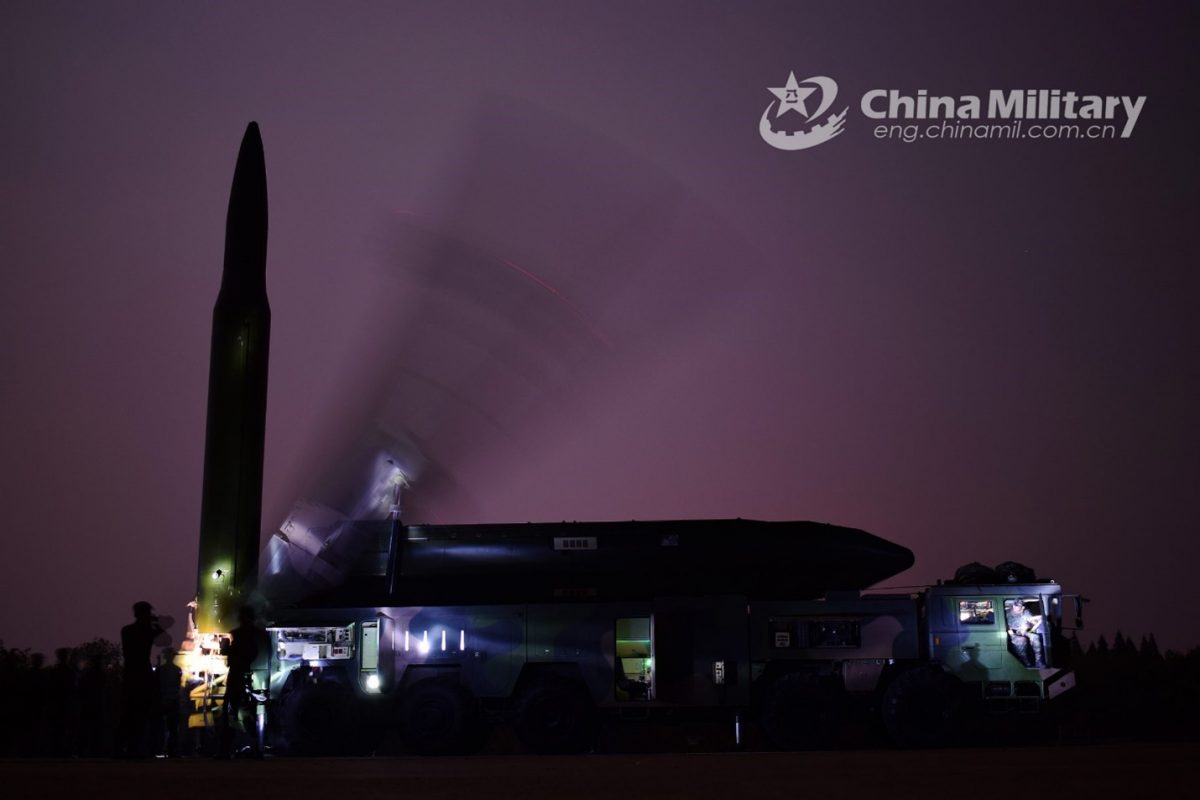Amid the nuclear challenges facing America, General Anthony J. Cotton, who leads the U.S. Strategic Command, has stressed the importance of readiness and adaptability in U.S. nuclear forces. The Nuclear Posture Review, a key component of national defense planning, highlights the urgency of modernizing the nuclear triad — bombers, submarines and intercontinental ballistic missiles — as well as the systems that ensure their cohesion and reliability. Cotton affirmed the NPR’s guidance, stating, “We cannot remain stagnant. Our modernization programs must include on-ramps and off-ramps to adjust to new challenges.”
Central to this modernization effort is the NUclear COmmand, COntrol, and Communications (NC3) system, which serves as the backbone of strategic deterrence. The NC3 infrastructure ensures that the president can communicate securely with nuclear forces, providing unambiguous orders and maintaining control under any circumstances.
Cotton described the NC3 system as enabling three essential actions: deciding when an order is valid, ensuring the authenticity of that order and confirming when operations must cease. “NC3 enables us to decide, direct and confirm every step of a nuclear operation,” he explained. “It ensures connectivity with the president and validates every order as authentic.”
Despite its importance, the NC3 system remains a vulnerability due to its Cold War-era architecture. Cotton acknowledged that while the system has performed reliably for decades, it now faces significant challenges from evolving cyber threats, space-based vulnerabilities and its own aging infrastructure. While he agreed that modernization efforts must integrate advanced technologies — such as artificial intelligence — to process massive amounts of data efficiently, Cotton stressed that human oversight remains non-negotiable. “AI supports decision-making, but humans will always stay in control,” he declared.
The challenges of modernization extend beyond technology. Funding and integration represent obstacles as well. The NC3 enterprise encompasses more than 200 interconnected systems across multiple services and agencies, requiring seamless coordination to ensure operational continuity. Cotton highlighted the complexity of this task, noting that each element must align with the overarching strategy while maintaining flexibility to adapt to emerging threats. He emphasized the need for collaboration, “Modernization is about ensuring continuity, building a road map and aligning near-term actions with long-term goals.”
This complexity underscores the vital role of the NPR and the NDS in shaping modernization priorities. Both documents emphasize that America must sustain a safe, secure and effective nuclear deterrent to meet the challenges posed by adversaries. These assurances are particularly important for maintaining the credibility of extended deterrence commitments to allies like Japan and South Korea.
The modernization effort also comes with significant financial implications. Critics often cite the costs of nuclear modernization, projecting expenditures of over $1 trillion over the next 30 years. However, Cotton provided a clear perspective on this issue, arguing that modernization represents only 4% of the defense budget. “Modernizing our forces today costs far less than facing the consequences of unpreparedness,” he argued. The four star also emphasized that the investment covers all three legs of the nuclear triad as well as the NC3 system, making it essential for maintaining strategic stability.
As the United States navigates this modernization process, lessons from adversaries further underscore the importance of maintaining a credible deterrent. Russia’s saber-rattling during the Ukraine conflict and its continued nuclear threats reveals the coercive power of nuclear capabilities. And China’s growing arsenal highlights the need for the United States to adapt its strategies to deter both conventional and nuclear aggression. Cotton stressed that U.S. forces must be prepared to prevent conflicts from escalating to the nuclear level, stating that ” must ensure that no conventional conflict escalates into nuclear war.”
Cotton’s vision for STRATCOM reflects this urgency. As the command enters its “year of acceleration,” he outlined a forward-looking strategy to address immediate needs while building a foundation for long-term success. “We’ve laid the foundation for modernization and taken action to address immediate needs. Now we must accelerate progress to meet the challenges ahead,” he said. His approach includes fostering collaboration across agencies, leveraging technological advancements and engaging with allies to strengthen collective defense.
While he addressed immediate operational challenges, Cotton also called for a renewed focus on cultivating the next generation of strategic thinkers. He emphasized the importance of blending traditional nuclear theory with contemporary insights to address today’s unique threat environment. “Theoretical foundations remain important, but we need new thinking to address the interwoven dynamics of alliances, economic interdependence and technological advancements,” he explained. His remarks emphasize a multidisciplinary approach to strategic deterrence — one that accounts for the complexities of a multipolar nuclear age.
Cotton’s insights highlight the stakes of modernizing U.S. nuclear forces in an increasingly competitive and unpredictable world. The integration of advanced technologies, the reinforcement of NC3 infrastructure and the maintenance of strong alliances form the bedrock of this effort. At its core, modernization ensures that the Defense Department retains a credible deterrent capable of meeting any challenge. “Deterrence is about producing effects that meet the president’s objectives,” Cotton concluded.
A Pentagon release notes that “The United States stands at the crossroads of strategic competition. The modernization of its nuclear forces represents not just a defense imperative but a critical investment in global stability.”
Photo: A ballistic missile system attached to a brigade under the PLA Rocket Force is well-prepared during a night training exercise in early March, 2020. (eng.chinamil.com.cn/Photo by Zhang Feng)
